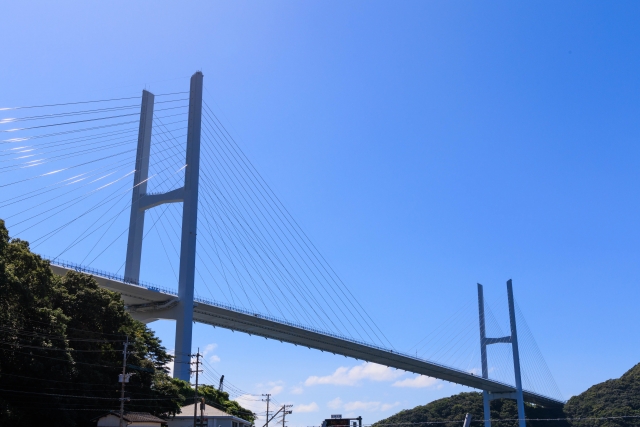About Nagasaki Goddess Bridge
A World Heritage Site, an abandoned offshore coal mine. It shows the history of Japan’s modern industrialization. You can learn how production was organized and how people lived on the island at that time, both on the ferry and on the island.
The island was completely left to nature after man abandoned it. It is a scene of the end of mankind. It is a pity that most of the houses are already in danger, so visitors cannot enter the core area at all.
For Koreans, this was the place where their ancestors were enslaved and forced to work, so they are emotionally repulsed by it. There are also Chinese laborers, but there is little research. For example, Korea can show evidence that 500 Korean laborers died here, while the casualties of Chinese laborers can only be vaguely described as “a large number”.

How to get there
Nagasaki Station South Exit (toward Chuobashi) bus stop or
Nagasaki Bus from Chuobashi (Kencho Zaka Dori side) bus stop
Nagasaki Bus bound for Kabashima, Misaki Kiba, Kawahara Koen, etc. from Nagasaki Station South Exit (toward Chuobashi) or Chuobashi (Kencho Zaka Dori side) bus stop.
Take a Nagasaki Bus bound for the southern area such as “Kabashima-bound”, “Misaki Kiba-bound”, or “Kawahara Koen-bound”.
Get off at the “Megami” bus stop. Get off at “Megami” bus stop.
Walk about 15 minutes.
Tips
We made a reservation for a half-day trip to Hashima Island with Yamaasa Marine Transport, a shipping company that accepts reservations with foreign passports. We bought a ticket with a reservation form, and we got a ticket for the boat ride and a ticket for the use of the facilities on Hashima Island. All trips to Hashima Island are not called tours, but study tours, which means visiting and learning.
From the small pier where we will be docked, we can see the crumbling buildings and the dike of just a few meters. It is hard to imagine how this island avoids seawater backing up and being capsized by seawater once the wind and waves at sea are too strong.
The whole warship island can walk around very little, three places to visit and learn deliberately opened up the platform. All the others are a road to come back or return the same way.
The high point of the whole island, there is a white tower, it is actually a water tower. This water tower is not like other buildings on the island, completely unaffected by the sea breeze received, and now remains as new.
I heard the most about Sugoi, and I think it is indeed impressive that the island has survived in such a form. However, I was still surprisingly angry that the islanders avoided mentioning the foreign workers in their explanations of the island.
Only by standing in this place myself and listening to the voices can I have a clearer understanding. Regret, anger, and relief were all interwoven into the mood of this time on the warship. Not as a tourist attraction, but as a place to visit and learn, and then to realize for myself.
Website
https://www.nagasaki-tabinet.com/guide/60756